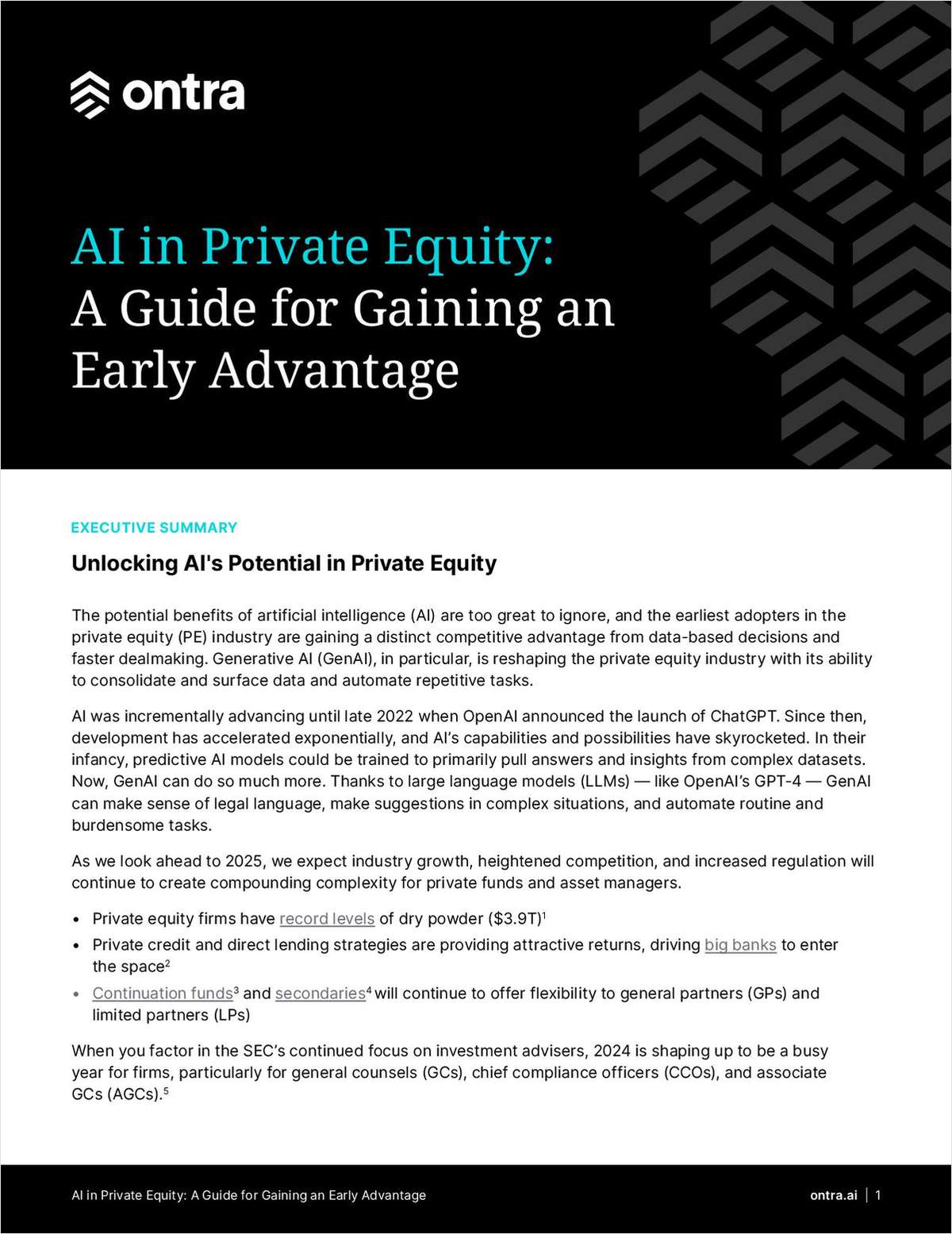Linklaters reports ethnicity pay gap data as gender gap narrows
Firm files figures ahead of potential new mandatory reporting requirements
January 21, 2019 at 09:39 AM
4 minute read
Linklaters has revealed its ethnicity pay gap alongside its latest gender pay gap data, ahead of the potential introduction of new mandatory reporting requirements for businesses.
The firm – which last year was the first of the magic circle to file its gender pay gap report – has released figures which show that across the whole firm, including equity partners, the firm has a 30.3% ethnicity pay gap on a mean basis, and a 0% gap on a median basis.
Eighty-three percent of the firm's UK workforce disclosed their ethnicity for the report, of who 21% are black, Asian or minority ethnic (BAME).
The report also reveals details of the ethnicity pay gap broken down by pay quartiles. The gap is most pronounced among the top quartile of earners at 21.2%, while in the bottom quartile, the gap is 1% in favour of BAME employees.
The firm said the decision to report its ethnicity pay gap had been taken "in line with our strategy to increase the representation of BAME colleagues at all levels in the firm".
After the first year of mandatory gender pay gap reporting, the UK Government announced last year that it was considering introducing similar requirements for ethnicity data, launching a three-month consultation in October.
Responses to the consultation – which closed on 11 January – are currently being analysed as the government weighs up what disclosures should be made mandatory "to allow for meaningful action".
Last year, Allen & Overy also included ethnicity pay gap figures in its reporting, revealing a mean pay gap of 22.8% for BAME staff in 2017 and 21.6% for 2018.
For the first year of gender pay gap reporting, law firms were not required to include partners but following widespread calls for greater transparency, many have since opted to do so, including Linklaters, which voluntarily disclosed its partner pay gap at the end of March.
This year, the firmwide pay gap at Linklaters has narrowed from 44.2% to 37% on a median basis, although the mean average increased slightly from 60.3% to 61.1%.
The firm's top quartile of earners is less male than it was last year, with the proportion of women in the top quartile increasing from 37% to 41%.
Linklaters' pay gap excluding partners – which all law firms with more than 250 employees are required to report – has also improved on last year, with average hourly pay for men now 20.8% in favour of men, down from 23.2%, and the median average down from 39.1% to 33.9%.
Last year, a report by the Business, Energy and Industrial Strategy Committee into the effectiveness of the first year of gender pay gap reporting described the exclusion of partners from the first round of reporting as making "a nonsense" of efforts to tackle the pay gap.
Law firms and other limited liability partnerships had not been required to include partner remuneration in their calculations as they are not technically employees, but clamour has since grown to make it compulsory for firms to include them in future.
Discussions over how to introduce a standardised approach to including partners have since taken place, with Clifford Chance and Pinsent Masons meeting with Law Society president Christina Blacklaws last year to look at how to encourage more transparency.
This content has been archived. It is available through our partners, LexisNexis® and Bloomberg Law.
To view this content, please continue to their sites.
Not a Lexis Subscriber?
Subscribe Now
Not a Bloomberg Law Subscriber?
Subscribe Now
NOT FOR REPRINT
© 2024 ALM Global, LLC, All Rights Reserved. Request academic re-use from www.copyright.com. All other uses, submit a request to [email protected]. For more information visit Asset & Logo Licensing.
You Might Like
View All
Dentons Australian Chair Doug Stipanicev Back At Work After Investigation
4 minute read
A&O Shearman Luminary, Former US Co-Chair, to Leave Partnership


Mayer Brown’s Hong Kong Split to Take Effect in the Coming Week
Trending Stories
- 1Mediators for the Southern District of New York Honored at Eighth Annual James Duane Awards
- 2The Lawyers Picked by Trump for Key Roles in His Second Term
- 3Pa. High Court to Weigh Parent Company's Liability for Dissolved Subsidiary's Conduct
- 4Depo-Provera MDL Could Be Headed to California
- 5Judge Holds New York City in Contempt Over Conditions at City Jails
Who Got The Work
Michael G. Bongiorno, Andrew Scott Dulberg and Elizabeth E. Driscoll from Wilmer Cutler Pickering Hale and Dorr have stepped in to represent Symbotic Inc., an A.I.-enabled technology platform that focuses on increasing supply chain efficiency, and other defendants in a pending shareholder derivative lawsuit. The case, filed Oct. 2 in Massachusetts District Court by the Brown Law Firm on behalf of Stephen Austen, accuses certain officers and directors of misleading investors in regard to Symbotic's potential for margin growth by failing to disclose that the company was not equipped to timely deploy its systems or manage expenses through project delays. The case, assigned to U.S. District Judge Nathaniel M. Gorton, is 1:24-cv-12522, Austen v. Cohen et al.
Who Got The Work
Edmund Polubinski and Marie Killmond of Davis Polk & Wardwell have entered appearances for data platform software development company MongoDB and other defendants in a pending shareholder derivative lawsuit. The action, filed Oct. 7 in New York Southern District Court by the Brown Law Firm, accuses the company's directors and/or officers of falsely expressing confidence in the company’s restructuring of its sales incentive plan and downplaying the severity of decreases in its upfront commitments. The case is 1:24-cv-07594, Roy v. Ittycheria et al.
Who Got The Work
Amy O. Bruchs and Kurt F. Ellison of Michael Best & Friedrich have entered appearances for Epic Systems Corp. in a pending employment discrimination lawsuit. The suit was filed Sept. 7 in Wisconsin Western District Court by Levine Eisberner LLC and Siri & Glimstad on behalf of a project manager who claims that he was wrongfully terminated after applying for a religious exemption to the defendant's COVID-19 vaccine mandate. The case, assigned to U.S. Magistrate Judge Anita Marie Boor, is 3:24-cv-00630, Secker, Nathan v. Epic Systems Corporation.
Who Got The Work
David X. Sullivan, Thomas J. Finn and Gregory A. Hall from McCarter & English have entered appearances for Sunrun Installation Services in a pending civil rights lawsuit. The complaint was filed Sept. 4 in Connecticut District Court by attorney Robert M. Berke on behalf of former employee George Edward Steins, who was arrested and charged with employing an unregistered home improvement salesperson. The complaint alleges that had Sunrun informed the Connecticut Department of Consumer Protection that the plaintiff's employment had ended in 2017 and that he no longer held Sunrun's home improvement contractor license, he would not have been hit with charges, which were dismissed in May 2024. The case, assigned to U.S. District Judge Jeffrey A. Meyer, is 3:24-cv-01423, Steins v. Sunrun, Inc. et al.
Who Got The Work
Greenberg Traurig shareholder Joshua L. Raskin has entered an appearance for boohoo.com UK Ltd. in a pending patent infringement lawsuit. The suit, filed Sept. 3 in Texas Eastern District Court by Rozier Hardt McDonough on behalf of Alto Dynamics, asserts five patents related to an online shopping platform. The case, assigned to U.S. District Judge Rodney Gilstrap, is 2:24-cv-00719, Alto Dynamics, LLC v. boohoo.com UK Limited.
Featured Firms
Law Offices of Gary Martin Hays & Associates, P.C.
(470) 294-1674
Law Offices of Mark E. Salomone
(857) 444-6468
Smith & Hassler
(713) 739-1250










